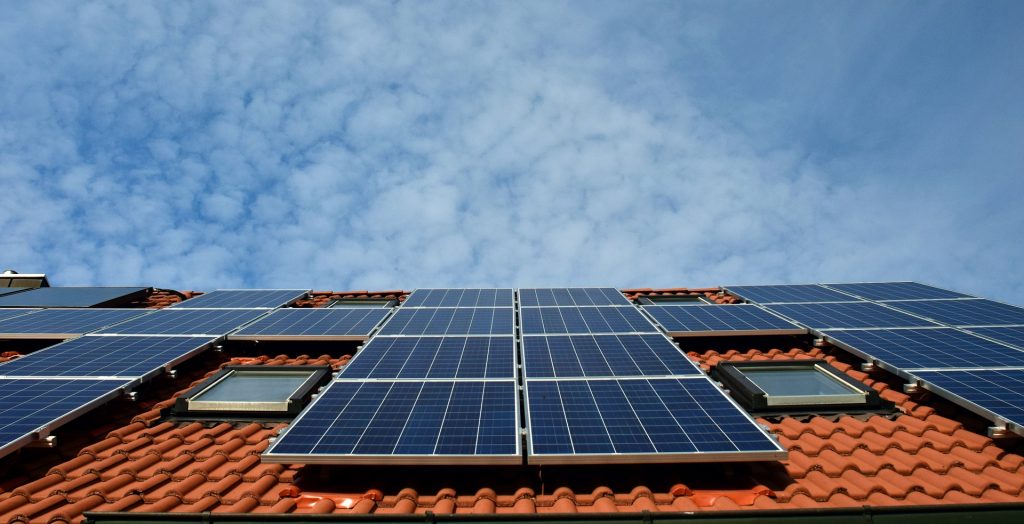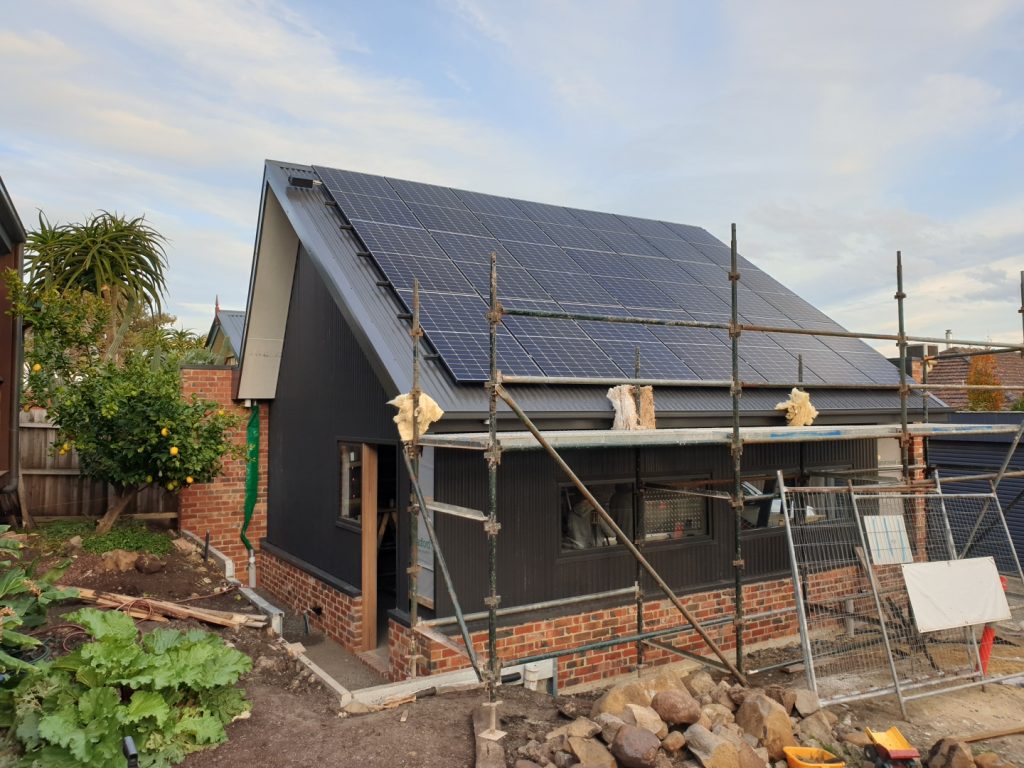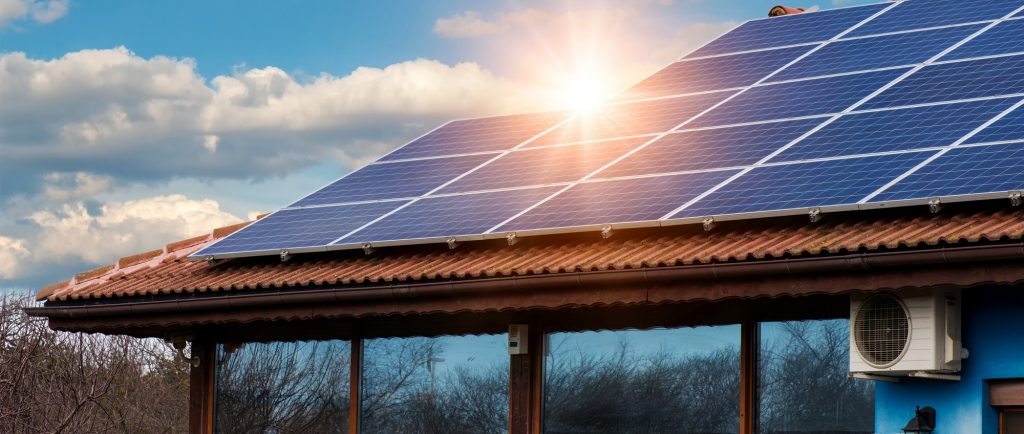
Solar power is becoming increasingly popular so homeowners can lessen their reliance on nonrenewable energy sources and save money.
Solar panels are an excellent investment since they may boost the value of a home and provide a long-term, environmentally friendly way to generate electricity.
This page has all the details you need about solar panels, whether you are considering them for your own house or just wanting to learn more about this expanding sector.
Benefits Of Solar Panels On Property Value
In addition to lowering your energy costs, installing solar panels could be the best investment in your home.
Many people’s homes are their most valuable possession; therefore, taking good care of them is essential to preserving their equity.
In addition, keeping your home in good repair and making any necessary modifications will improve your quality of life and its resale value.
It makes perfect sense to try and boost the value of your property, but how exactly do you achieve this? Not all improvements or alterations are worth the money spent on them.
This may be less important if you plan on living in the house for a long time and will derive great satisfaction from the improvements.
The value of a home can be increased by installing solar panels even if no other modifications are made.
Why? Electricity is a necessity in today’s modern world, and if the price of electricity can be lowered by installing solar power, potential buyers will see your home positively.
People are more accustomed to solar electricity than other alternative energies because solar-aided hot water systems have been around for a long time. More solar panels are now installed on homes’ rooftops than only five years ago.
One estimate puts the percentage of Australians who use solar energy at home at 19 per cent; this could include people who use solar panels solely for water heating or who have installed entire solar power systems that send any unused energy back into the grid.
Solar Energy Is Gaining Popularity
Since most Australians have a favourable opinion of solar energy, including solar panels in a home’s design can increase its market value.
According to studies, the value of a home can increase by roughly $6,000 per kilowatt of solar energy, making it a good investment to install solar panels on the roof.
Indicating a retail value increase of almost $29,000 for a 5kW installation.
The benefits of using solar power at home will become even more apparent as the cost of electricity continues to rise.
A Part Of The Formula Is Making Sales As Quickly As Possible
When you put your house up for sale, you may find it challenging to focus on other endeavours once sold. It’s like putting your life on pause until the appropriate buyer comes along and signs on the dotted line.
Then, and only then, can you start fresh in a new place and make it your own. So it’s disheartening if the home sells later.
A home with solar panels installed may sell more rapidly on the market.
For example, you could see a 20% increase in your home’s sale price if you install solar panels. This is another way solar energy can improve your home and lifestyle.
Keeping With It
Installing solar panels is a good idea even if you aren’t planning to stay in the property for the near future.
The money saved on energy bills and maintenance fees over time will more than pay for the initial investment.
In conclusion, adding solar panels to your home is a great investment.
If you don’t end up selling, you’ll still benefit from the improved house value and the savings you’ll enjoy.
Methods Of Installing Solar Panels
Solar panels are typically installed on the upper surfaces of buildings or free-standing structures.
Therefore, your solar panel must be placed where it will receive the maximum sunlight.
Solar panels are most efficient when they are exposed to sunlight.
Therefore, positioning photovoltaic panels directly beneath the noonday sun would maximise the efficiency of photovoltaic modules while setting up a Solar Power system.
Remove any potential sunblocks, like branches, from the area of the solar unit before beginning installation. Find out when the sun will be above and make sure nothing will be blocking it from hitting your solar panels. Shadow will reduce the solar unit’s operational efficiency.
Things to check off before getting solar panels installed:
Determine Expenses
The cost of constructing a Solar System of the specified size and layout should be estimated.
Governments around the world offer financial incentives to homeowners who want to install solar panels as a means of generating clean, renewable energy.
However, the solar energy subsidy varies from country to country.
Required Tools
Verify the batteries, power inverter, solar panels and charge controller needed for the solar energy system.
Size Of The System
Calculate the minimum necessary solar system size. The total wattage of all the appliances used and the number of hours per day they will be in operation should be determined.
Following the processes above will allow us to determine the necessary wattage to select the appropriate solar battery capacity and wire gauge. The proper wire size prevents overheating and maximises power delivery to the batteries.
Energy Efficiency With Solar Panels

Solar panels’ primary advantage is the money they save homeowners on electricity.
In addition, by using solar panels, a household may create clean, renewable energy that can be used to run electronics, lights, and even heating and cooling systems.
Installing a solar photovoltaic system may generate clean energy and save electricity costs. Your home’s electrical equipment will use some of the electricity you generate, and any excess will be returned to the power company.
The average daily electricity use for a home in Victoria is about 12-kilowatt hours.
A 1.5–3 kW solar PV system can generate between 45–90% of this over a year, though this fluctuates from month to month due to seasonal variations in the amount of sunlight available.
Different Solar Photovoltaic (PV) System Varieties
Solar photovoltaic panels in Australia typically produce DC (direct current) electricity and are wired into the grid. However, to power your home’s electronics, you must utilise an inverter to transform the DC power you generate into the 240-volt AC (alternating current) power your appliances demand.
All of your PV system’s power is sent straight to your house, and any surplus is sent back into the grid. When it’s nighttime or your PV solar system isn’t producing enough power, your home will draw power from the grid.
Solar photovoltaic (PV) installations that aren’t directly tied to the power grid are also viable.
Batteries in solar photovoltaic systems not only store excess energy for use at night or during periods of low sunshine but also, in some situations, keep electronics functioning in the event of a power outage.
A home can go totally off the grid if the battery installed is powerful enough, though such systems are expensive and typically require a diesel engine as a backup.
The electricity generated by your PV system that you use at home is directly proportional to the size of your PV system, the amount of electricity you use, and the amount of electricity you use during the day.
The more energy you use during the day, the more solar panels you’ll need to create that quantity of power.
Typically, a PV system will export between 70 and 50 per cent of its output to the grid, with domestic use accounting for the remaining 30 to 50 per cent.
- Because you get compensated for the electricity you export to the grid, you can minimise the amount of mains electricity you consume, lowering your annual electricity bill.
Solar energy is gaining popularity because of its potential to cut down on monthly utility bills.
Installing solar panels can be a wise financial decision because they can increase a property’s value and provide a sustainable source of electricity for years to come.
Currently, 19% of Australian households generate their own solar power using rooftop solar panels. Studies show that the addition of solar panels can raise a home’s value by about $6,000 per kilowatt, or about $29,000 for a 5kW installation.
As the price of conventional electricity rises, more and more people are seeing the advantages of switching to solar power for their homes.
If you aren’t planning on staying in your home for the foreseeable future, but still want to get the most out of it, consider installing solar panels.
Costs, tool requirements, and the smallest feasible solar array should all be planned well beforehand to ensure a successful installation.
Homeowners in some countries can receive subsidies from their governments to cover the cost of installing solar panels on their roofs. Saving money on power costs while producing green energy is a double win with solar panels.
They can power appliances like televisions, refrigerators, and air conditioners.
Australian solar photovoltaic systems primarily generate direct current (DC) electricity and are grid-connected.
Batteries in solar photovoltaic systems can store extra power for later use, allowing gadgets to continue working even if the grid goes down.
There is a direct correlation between system size, daily electricity consumption, and the amount of electricity generated by the system.
Exporting between 70 and 50 percent of a solar PV system’s output to the grid can reduce monthly utility costs.

A typical Victorian home uses 4,400 kWh per year, which translates to about $12 in savings depending on the size, orientation, and placement of the PV system.
The average lifespan of an inverter is 5-10 years, while solar photovoltaic panels last for 20-30 years. Selecting the right size and orientation and using electrical appliances during the day will maximise the use of PV-generated electricity.
How Much Will You Be Able To Save?

Size (or rated output in kilowatts), orientation, and location all play a role in a solar PV system; since northern Victoria receives more sunlight, the PV system there will have a higher annual output.
There is a wide range in the year and daily electricity use, but a typical Victorian home uses about 4,400 kWh or 12 kilowatt hours.
The amount of money you save on utility bills after installing a PV system is proportional to the electricity you utilise. Usually, this ranges from 30–50% of the total energy produced by the PV array. Therefore, the amount of mains electricity saved will directly correlate to the amount of money saved on your energy bill.
Your electricity provider will pay you a feed-in tariff for any power you export to the grid more than your PV system can use.
Therefore, using as much PV-generated electricity in your home as possible will result in the greatest savings on your energy bill because the feed-in tariff is typically substantially lower than your mains electricity tariff.
Maximising the usage of PV-generated electricity in your home is attainable by selecting an appropriate size and orientation for your PV system and using electrical appliances during the day.
Solar photovoltaic panels (or modules) have a lifespan of 20–30 years, whereas inverters have a lifespan of 5–10 years.